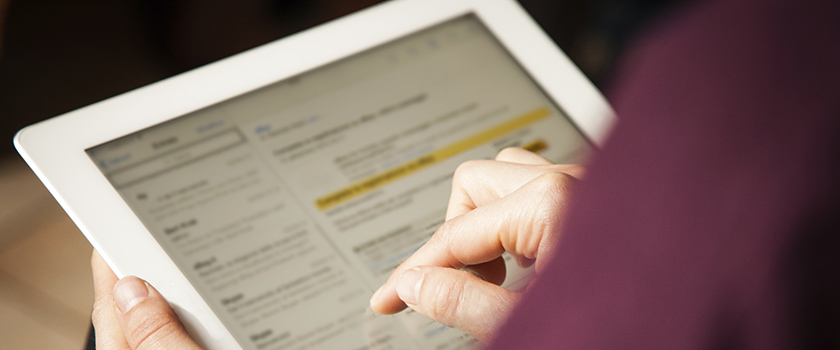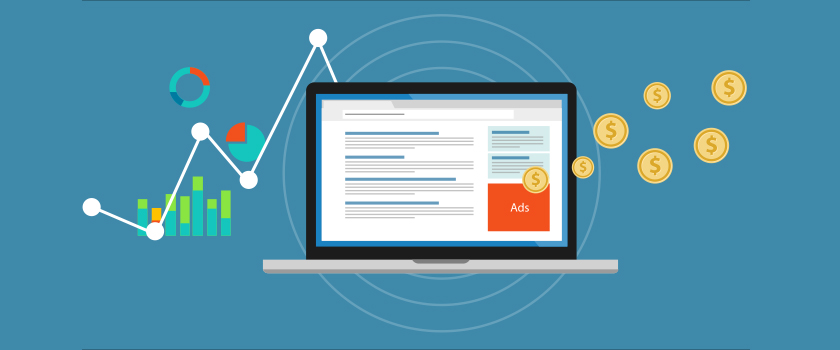
There are a lot of digital marketing tactics out there for reaching new potential customers – online advertising, SEO and social media to name a few – but we’ve all heard the old adage that it’s cheaper to sell to a current customer than to attract and convert a new one. And it’s true! It costs a whopping five times as much to attract a new customer than it does to keep an existing one.
So, how can you engage your existing customers and keep them coming back? Email marketing is a great way to get promotions and newsletters directly in front of your existing customers, which can be just the push needed to keep them loyal.
There’s a lot to know when you’re implementing an email marketing strategy. Read our “dos” and “don’ts” to get started, then join us for our upcoming HelpForce Live! session “Become an Inbox Master: Email Marketing Pro Tips” to learn more.
DON’T send marketing emails from your personal email address.
Personal email services like Gmail or Yahoo limit the number of emails you can send at a time, which makes them less than ideal for big-batch marketing emails. Additionally, trying to send large-batch emails from your personal email address (like jsmith@gmail.com or jsmith@dealership.com) can actually get your emails blacklisted. This can make it harder for any of your email communications to get delivered.
If you send a large-batch email from your personal account, you might use the To: or CC: fields for all of your recipient’s email addresses, which can expose your readers to security risks. It only takes one spammer getting ahold of the email to compromise all of your recipients. Sending your messages using this tactic also opens up the possibility of someone hitting the “Reply All” button to respond – this isn’t necessarily a risk, but it can be embarrassing for the sender and annoying to the recipients!
DO use a third-party email service provider like Constant Contact or MailChimp.
Email service providers, like Constant Contact and MailChimp, comply with email marketing best practices to make sure your messages get delivered without getting blacklisted. Even better, they help prevent your emails from getting stuck in your readers’ spam filters with spam prevention tactics and allowing recipients to adjust their subscription settings. They also provide other useful tools, like performance stats.
DON’T buy email lists or send unsolicited emails.
If you don’t have a large database of customer emails, purchasing an email list may seem like a tempting idea. However, sending emails to a purchased email list can actually cause problems. Some email service providers won’t let you send to purchased email lists – they’ll insist you use opt-in lists only. Purchased email lists can also get your messages marked as spam since the recipients aren’t familiar with you. They can even include “spam traps”, or fake email addresses used to help catch spammers. Getting flagged as a spammer can drastically hurt the chances of your emails getting delivered.
DO collect email addresses from your customers and get permission to email them.
The good news is, it doesn’t take much to build a quality email list of your own. Have your sales and service employees ask customers for email addresses during the sales process, or make an email address field required for forms on your website. You’ll likely get a stronger response to your emails by contacting customers who are already familiar with your business and who voluntarily gave you their contact information.
DON’T wait until the last second to create and send an email.
It can be easy to forget about a promotion until it’s almost on top of you, but sending last-minute emails isn’t the best way to go. Waiting until the day before an email needs to go out puts a lot of extra stress on you. You need to develop all of the content and put together the email in a way that will engage your customers, and that’s difficult to do on short notice.
DO plan your content ahead based around store promotions, holidays and other events.
Instead of waiting until the last minute to draft your marketing emails, take some time to plan an email calendar. Figure out how many emails you’d like to send a month, then plan your content early on based on store promotions, holidays and other events. Set a calendar reminder to draft your content at least a few days before your send date. You can even draft content a little at a time leading up to your send date!
DON’T rely heavily on images.
While including flashy images of the newest models on your lot might seem like a good idea, having a lot of images in your emails can backfire. The first time someone receives an email from you, most email providers won’t automatically download the images, meaning the recipient may only see the text of your email. If your whole message is one huge graphic, they might not see anything at all! Spam filters also look at your text-to-image ratio, and if there’s an excessive number of images, you might get sent straight to the junk mail folder.
DO make sure your email is effective if none of the images load.
Instead of bogging down your email with lots of graphics or photos, MailChimp recommends using a ratio of 80 percent text to 20 percent images. This general guideline will help you pass most spam filters (although all spam filters have their own criteria, so it’s not a foolproof solution). Since the text will load independently of the images, it also ensures that your customers can still benefit from the email copy even if none of the images load.
Taking advantage of email marketing can help you keep your customers loyal and drive more sales. Ready to get started? Sign up for our upcoming HelpForce Live! webinar to learn more email marketing best practices.


